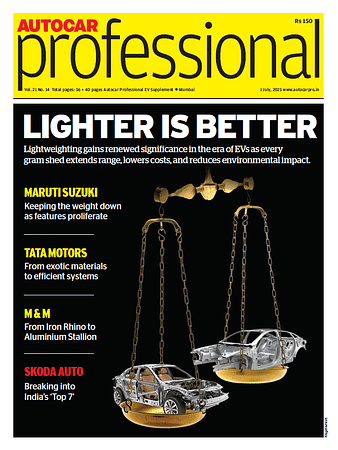Exclusive: Tata Motors Buys In-House Development License for Fiat’s 2.0L Diesel Engine
Tata Motors has acquired the right to modify and customize Fiat’s 2.0L Multijet diesel engine from Stellantis, giving it more flexibility to take on rivals such as Mahindra & Mahindra in the SUV market.
Tata Motors has taken a significant step in its powertrain strategy by acquiring the license to develop and upgrade Fiat’s 2.0-litre Multijet II diesel engine, which powers the Harrier and Safari SUVs. This engine is produced under license from Stellantis by Fiat India Automobile Private Ltd (FIAPL)—a joint venture between Tata Motors and Stellantis in Ranjangaon. The rights to develop this engine further have been granted to Tata Motors, giving the company independent control over the engine’s use, design changes and upgrades, even though the IPR still resides with Stellantis.
A Tata Motors spokesperson confirmed the development. “Tata Motors Passenger Vehicles (TMPV) & Stellantis have entered into a License Technology Agreement in Q4 FY 25 under which TMPV has acquired licence from Stellantis which grants rights to carry out certain developments & technical changes in the FAM B 2 litre Diesel Engine for our own requirements. The licence basically covers development / modifications of the engine to meet the various upcoming regulations etc. The license also enables TMPV to initiate activities for performance enhancements of the said engine that will lead to overall improvements in the vehicle performance,” the spokesperson said.
The timing is critical. With the Harrier and Safari facing increased competition, the lack of powertrain options has been a handicap for Tata Motors. Now, with autonomy over the 2.0 Multijet diesel, Tata gains the flexibility to upgrade the engine independently to meet future emission norms and tailor power outputs. This is especially relevant as diesel continues to see strong demand despite the broader shift toward electrification, particularly in large SUVs.
The licensing deal effectively removes the bottlenecks and costs that came with external approvals and development, as previously, any upgrades or calibration work had to be routed through Stellantis and came at a steep cost. In fact, just touching the ECU for any calibration change could cost as much 10 million Euros. These sky-high calibration costs is the reason why Tata Motors restricted itself to just a single calibration for the BS6 transition - a 170hp version used across both the Harrier and Safari. Offering a lower-output 150hp option—a common industry practice to differentiate variants—would have meant paying for a second calibration, pushing up costs further. As a result, Tata lost out on flexibility, especially when compared to arch-rival Mahindra.
Mahindra, with its in-house 2.2-litre mHawk diesel engine, offers a wide range of calibrations and power outputs—spread across the Thar, Thar Roxx, Scorpio N, and XUV700—and can even bundle in multiple drive modes. Tata, on the other hand, couldn’t afford these options due to the economics of its earlier licensing deal.
Tata Motors had long wanted more power from the 2.0-litre diesel. For the Safari and Harrier facelifts in October 2023, engineers had pushed to increase its output from 170hp to around 180hp, to better match Mahindra’s mHawk offerings. However, any such power bump meant going back to Stellantis—an exercise that proved both slow and expensive. Tata’s frustration grew as it became clear that progress was constrained by external control. The only viable solution was to bring development in-house by taking full operational control of the engine. Tata Motors can now recalibrate the ECU at will, unlock more power and prepare for future emission norms without third-party costs or constraints.
However, there will be no change in the production agreement for the engine. A Tata Motors spokesperson has officially clarified that “It is pertinent to note that manufacturing of the engine will continue at FIAPL for both TMPV & Stellantis and the IP of the basic engine rests with Stellantis except for the development / modifications undertaken by TMPV which will rest with latter.”
What remains unclear is whether FIAPL’s other customer MG Motor India will have access to Tata Motors upgradation of this engine. The Fiat 2.0 diesel also powers the MG Hector. However, it is likely that MG Motor India may stop offering a diesel option altogether when the all-new Hector arrives sometime in 2026.
Taking licensed control of the Fiat engine is a strategic coup for Tata. Developing a brand-new, large-capacity diesel from scratch would have been both expensive and time-consuming—especially with diesel's long-term future uncertain. With this licensing deal, Tata Motors gains a strong, emissions-compliant base to build on, requiring only modest investment and less time to update.
The 2.0-litre Multijet II diesel, developed by Fiat Powertrain Technologies (now part of Stellantis), was sold to OEMs globally through a customer-supply program. FPT was also behind the most successful diesel in India—the 1.3-litre Multijet—once dubbed the “national engine of India” for powering 24 models across five brands.
While the Fiat 2.0-litre isn’t new or state-of-the-art, it remains relevant for the segment—and crucially, Tata now has full functional control over it, thanks to a license that brings freedom to use it without needing to own the IPR.
RELATED ARTICLES
Incentive for Rare Earth Magnet Production, India’s EV Momentum, Tata’s Bold Plans, & Mercedes Outlook
India’s auto sector sees key moves this week: rare earth incentives, EV milestones, used car growth, Tata’s roadmap, and...
Range Rover Introduces Compact ‘R’ Motif, Lettermark Stays
The new symbol will not replace the Range Rover lettermark but will instead be used in smaller areas and on merchandise....
Ather to Unveil New EL Electric Scooter Platform on August 30
Ather’s Community Day this year will also see the reveal of the company's new fast chargers.





 By Hormazd Sorabjee
By Hormazd Sorabjee
 27 May 2025
27 May 2025
 9272 Views
9272 Views





 Autocar Professional Bureau
Autocar Professional Bureau


 Autocar India
Autocar India


